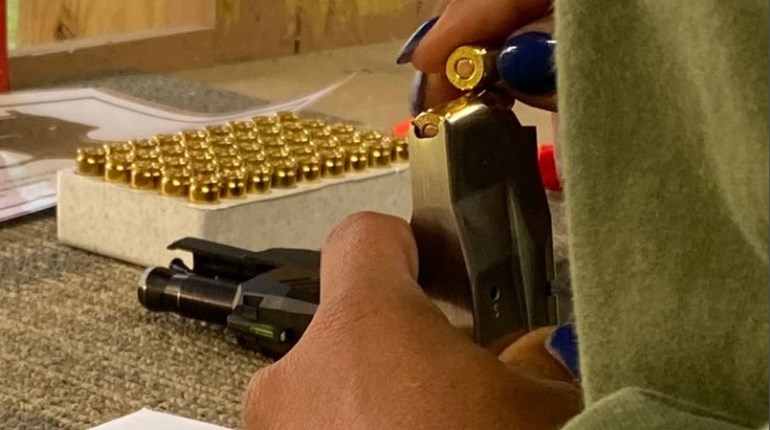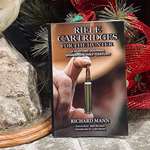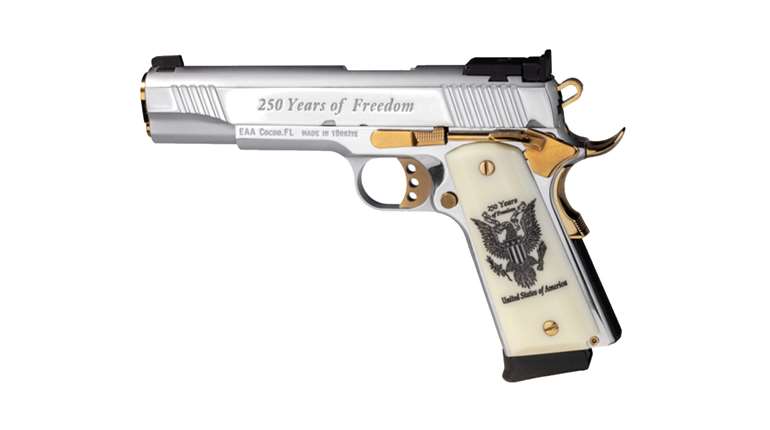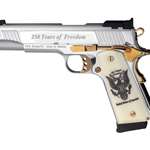
What a new gun owner wants to know, and what the instructor or other experienced shooter “thinks” the new gun owner wants to know, may be two totally different things. One of the biggest mistakes that many firearms instructors make is failing to dial their instruction back to the knowledge level of the student. Too many instructors are trying to get the student to do things with their gun that took them years to master.
After all, if an instructor has been shooting 10 years, 20 years or a lifetime, how can he or she expect a student who is brand-new to firearms to shoot as good as the person giving the instruction? The answer is that they cannot—and that is alright. This is because deep down, the new firearm owner does not expect to shoot like a seasoned professional. This is where the disconnect comes between instructor and student.
What the new gun owner wants to know is very basic and fundamental. Many times, it is what they were told at the point of purchase. Unfortunately, all this information given at the counter makes no sense, and the new gun owner usually just nods in agreement. There are five things that the new gun owner wants to know when they are at the range with their instructor.
1. How Do I Choose the Correct Ammunition?
One of the first things a new shooter wants to know is how to purchase the correct ammunition for their firearm. Even though the new gun owner was told at the point of sale what their new purchase shoots, it was probably not explained to your student’s satisfaction. You should provide details about any variations between acceptable ammunition.

First start by explaining the data stamp on the firearm that tells the user the correct ammunition for that particular gun. Next show your student the head stamp on the cartridge. The head stamp on the cartridge should match the data stamp on the firearm. Lastly, a new gun owner normally has all the paperwork that came with their firearm. Show them how to use the owner’s manual, especially where it states the correct ammunition for their firearm.

The firearms instructor should also explain any variations between the ammunition that is acceptable to use in their gun. For example, the most common caliber purchased today is 9 mm. Explain to your student that there are several names for the same cartridge such as 9 mm Luger; 9 mm Parabellum; and 9X19. Likewise, a .45 caliber semi-automatic can have the head stamp .45 ACP or .45 Auto.
2. How Do I Work This Thing?
Even though the new gun owner may have been shown how to operate the firearm in the store, it normally does not “click” with the student until it is performed at the range.
3. How Do I Stay Safe?
Fortunately, the new shooter usually has the desire to learn the safe handling of their firearm. This is the new gun owners’ biggest concern. It is their fear of being unsafe or that the gun is dangerous on its own, that has probably prevented them from owning one in the first place.

Many new gun owners are receptive to the idea of taking an NRA Basic Pistol, Rifle or Shotgun Course. Regardless of whether the new gun owner is going to take a course, it is still the instructor’s responsibility to explain the NRA Rules For Safe Gun Handling, not just recite them:
- Always Keep the Gun Pointed in a Safe Direction. Explain to your student that a projectile shot from a handgun can travel up to four miles. There is nowhere in North America where you can guarantee that no one is within four miles of you. If you are “there,” someone else might be too. So, we should always think about where the safest direction would be.
- Always Keep your Finger off the Trigger Until Ready to Shoot. Explain to your student that this is normally referred to as indexing. This means keeping your index, or trigger finger, off the trigger until ready to shoot. A good way to explain this is to keep your index finger above the trigger and parallel with the barrel or slide.
- Always Keep the Gun Unloaded Until Ready to Use. This does not mean the gun you carry for personal protection because by definition, it is ready to use. This means any firearm of which you are no longer in direct control.
4. How Do I Safely Store my Firearm?
Safely storing your firearm is one of the most important aspects of responsible gun ownership. This is something that the new gun owner wants to know but often forgets to ask about. But this does not absolve the instructor from explaining safe storage practices. It is especially important if new gun owners have young children in the house, a spouse who is not trained in the safe and proper use of the gun, or if they often entertain guests.
The instructor should make sure that the new gun owner understands that “hiding” a gun is not “securing” a gun. The instructor needs to explain the proper use of gun locks. He or she should also explain the different types of gun storage devices such as trigger locks, lock boxes, and safes.
5. How Do I Clean My New Firearm?
After many years of being an NRA Firearm Instructor, I have found that most new gun owners want to know how to clean their gun. That does not mean they will ever clean their gun, but they still want to know how to do it. As the instructor, he or she should explain the importance of keeping their firearm clean so that it is maintained in good operational condition.

If the new gun owner has a revolver, the instructor should explain how to clean the cylinder and moving points that need lubrication. If the individual has a semiautomatic pistol, the instructor should show them how to field strip the gun or break it down as far as the owner’s manual advises. The instructor should never go beyond a simple field strip or as far as the manual tells the new gun owner to disassemble.
The firearm instructor should always teach to the level of where the student is, not where the instructor thinks they should be. Remember, most new gun owners do not expect to shoot at the same level as the instructor nor do they expect to hit the “X” the first time out. New gun owners almost always have the same questions in the back of their mind.
It is very important the students of firearm instructors understand the safe and proper use of their firearm as well as utilizing safe storage practices. Instructing new gun owners is not the place to “show off” the shooting skills of the firearm instructor, nor is it the time to see how quickly the instructor can get their student to hit the bullseye.
Remember, a firearm instructor is usually the one who makes the first impression of a new gun owner seeking information and training. It is the instructor who can ultimately produce a safe gun owner or one who is unsafe.













































